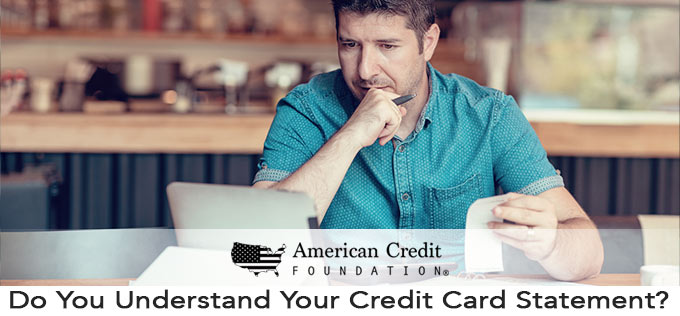
If you have a credit card, you surely know that you receive a monthly billing statement with all the information you need to know about the current status of your credit card account. Whether it comes hard-copy in the mail or electronically via email, you’ll always get the same information from month to month. But there may be some items that you don’t know about your credit card statement. So, let’s take a look at five things that are particularly important when it comes to these statements.
1. What is on my billing statement?
Your monthly statement includes:
- Your billing cycle dates
- Your account balance from the previous billing cycle
- Your minimum amount due
- Your payment due date
- Your credit limit and available credit
- The fee you’ll be assessed if you pay after this due date
- The number of days in your billing period
- All payments, credits, purchases, balance transfers, cash advances, fees, interest, and other transactions that occurred during the billing cycle
- Analysis of the types of balances on your account and the interest rate and interest charges for each
- The total interest and fees you’ve paid year-to-date
- Your earned and/or redeemed rewards, if applicable
- Your credit card issuer’s contact information, including a phone number to call if you’re having trouble making payments
2. What isn’t on my billing statement?
Your credit card statement only includes account activity that occurs within the current billing cycle. Any transactions before or after the current cycle won’t appear.
Whether you receive mailed copies or emailed versions of your statement, you can always log into your account online (granted you have set up your username and password) to see a list of transactions that fall outside the current timeframe – both past transactions you might not yet have paid off and more recent transactions that posted after your billing statement was generated.
3. When does my billing statement arrive?
Your billing statement will arrive at the end of each billing cycle. Credit card issuers are legally required to provide your statement at least 21 days before your minimum payment due date, so you have enough time to make a payment and avoid a late payment fee.
Most lenders default to sending hard copies to the mailing address on file. If you prefer an electronic version, you’ll need to sign up for paperless billing – which you can usually take care of through your lender’s website. In the future, you’ll receive an email when your statement is available to view by signing into your account online. You’ll see that your paperless statement looks just like your mailed statement.
4. What is a “minimum payment disclosure?”
Your credit card statement also includes something called a minimum payment disclosure. Don’t overlook this section – it can be a very eye-opening section to see how the math adds up.
This is a brief report summarizing: a.) the amount of time it will take you to pay off your balance if you only make the minimum payment, and b.) the total amount you’d end up paying if you take the minimum-only route.
The minimum balance disclosure also shows you the monthly payment amount you’d need to submit each cycle to pay off your balance in three years. If you have a large balance, this can be a helpful measure when determining a plan to pay it off.

5. Why didn’t I receive my billing statement?
There are a few reasons why you might not receive your statement. The first is obvious: Your lender doesn’t have your correct address (mailing address or email) on file. Don’t forget that it’s your responsibility to update your billing address if you move or change your email address.
Another reason for skipping your statement is that your lender might not send one out if your account balance is under $1 and you didn’t use your credit card in the last billing cycle. You also might not receive a statement if your account is in collections.
If this is a new credit card account, it often takes your first statement a few weeks to arrive – or even longer, depending on when your first transaction hits your account. But it could also be a simple clerical error or glitch in your lender’s system, so contact the company if you don’t receive your statement and believe you have a payment due.
Here at American Credit Foundation, we want to make sure that you use your credit card wisely. Be sure you fully understand your statement and how to read it to keep your account in good standing. Always read over every statement to make sure you’re paying only for charges you made – ignoring your statement could mean that fraudulent charges will escape your notice. But if you’ve hit a credit card stumbling block, don’t hesitate to contact us. We’ve helped many borrowers bounce back from financial hardship because of improper credit usage.